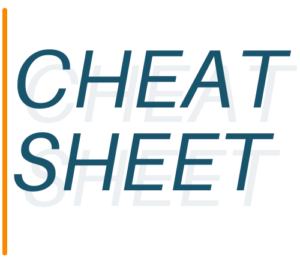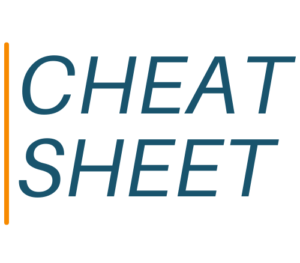
Updated Cheat Sheet: Reporters Who Cover Cybersecurity Surveys
Here’s a cheat sheet comprising 11 reporters who recently covered a cybersecurity survey as news. We carried over three targets from our Sept. 2022 cheat sheet; all other names are new.

Here’s a cheat sheet comprising 11 reporters who recently covered a cybersecurity survey as news. We carried over three targets from our Sept. 2022 cheat sheet; all other names are new.

Here’s a cheat sheet with ten authors of cybersecurity newsletters on Substack. All are men, and few are Americans.

This revision of a June 2023 cheat sheet doubles the number of cybersecurity targets based in the Washington, DC area — from 13 to 26. You’ll find multiple reporters from a single publication only if they write frequently.

Our previous IAM cheat sheet was less than a year old but needed a good scrub. Fewer reporters cover IAM these days. We did find 11, whose names are below. Few were on the last one.

We offer 19 cybersecurity podcasts, the vast majority being from independent experts. We omitted podcasts produced by vendors (or tried to), and those that were obviously pay-to-play. You’ll find lots of podcasts addressing how to land a job in cybersecurity.

Here’s a cheat sheet on the top 17 most prolific cybersecurity reporters as of April 2024. They are the ones who write more frequently about cybersecurity topics than other beat reporters.

Here are 11 reporters who cover quantum technology as applied to cybersecurity. The vast majority are beat reporters. PR pros will note that quantum continues to fascinate trend and big-picture journalists.

Here’s a short list of cybersecurity awards, mostly US-based but we included a couple over in the UK. This is a cheat sheet “lite” because it lacks contact info. Still, the info provided will get you started.

In this short and sweet cheat sheet, we’ve got eight targets focused at least in part on quantum security. This is still a nascent field, though the “quantum” term has been bandied about for a decade or two.

You may know James Rundle as the bass player in the NY-based punk rock band called Something Bitter. James is best known as a reporter for the WSJ Pro cybersecurity vertical.
YOUR ACCOUNT
FRIDGE NOTES
Using NLP software, Business Insider assesses how readers will react to its content emotionally, and then sells advertising based on that info. For example, an advertiser can choose to advertise against a story (or video) that makes you feel good or optimistic or pessimistic. This is where content is headed; and this trend may someday affect the way that you pitch.
An avalanche of fake news sites threatens the viability of the web itself. You may need a subscription to read this article, but this publication is definitely worth the money for a subscription.
The former TC star reporter picked a good place to go. Here’s his latest.
When Axios prompted ChatGPT for basic background research on Wealthfront’s confidential IPO filing last week, the bot confidently detailed a Wealthfront investor deck. The problem? It appears to be entirely made up.
Indy media business experts Brian Morrissey and Jacob Cohen Donnelly have built two very successful businesses with both newsletters and face-to-face events. Axios has noticed this and has decided to get into the event space focusing on the economics of publishing, which of course is a topic close to home. Announced this week: an Axios event coming up in September. Hosts: Sara Fischer and Kerry Flynn.